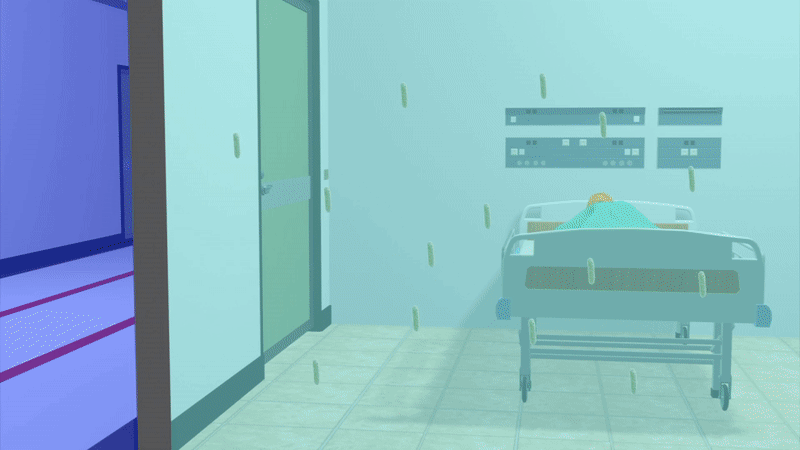What is a negative pressure room, different from a normal room?
The negative pressure room is a special isolation room used only for the treatment of serious cases, high risk of infection built by hospitals to avoid cross-infection. This room is always lighted 24 hours. So, what's so special about the negative pressure room?
This negative pressure room is equipped with a ventilation system that allows fresh air to enter the room. However, negative pressure is maintained compared to the rest of the building to prevent polluted air from escaping. Air pollution will be treated and filtered before being released out by ventilation system. This design helps reduce the possibility of virus spread.

All the doors, faucets, electrical outlets of this room are sealed to ensure the best possible airtight in order to maintain negative pressure.
Between the isolation chamber and the corridor there are also 2 small rooms (buffer rooms). The first cabin is where the health workers wear protective gear including waterproof clothing, surgical gloves, masks, shoes and hoods before entering the isolation room.
In an isolation room, health-care workers will be required to avoid contact with lips, eyes, runny nose, saliva and droplets when the ill person sneezes or coughs.
After treating the patient, the medical staff will leave the isolation chamber with a second cushion. Here, clothes that have been in contact with the patient and surgical needles will be removed and burned.
The isolation room is designed with two layers of doors, cannot open both at the same time and when one door is open, the other door must be closed.
The negative pressure isolation room has a monitor system connected to the outside with parameters of oxygen concentration, breathing rate, heart rate . of the patient. When needed, patients and physicians can talk by phone.
Doctors outside can monitor the patient continuously through the camera system.
You should read it
- Some useful experiences when renting a room for new students
- Japanese engineers share a way of 'ventilation' to cope with COVID-19
- The secret of simple living room design is all possible
- What is the Clean Room technique?
- How to create a private room with friends Among Us
- How to choose to buy a cooler according to the room size
 What are the requirements for becoming an NASA astronaut?
What are the requirements for becoming an NASA astronaut? Why is hail?
Why is hail? Animals can be surprisingly humanoid: rats can drive, dolphins dream ...
Animals can be surprisingly humanoid: rats can drive, dolphins dream ... The largest-ever explosion in the universe created a giant hot-air sphere that could hold 15 Milky Way galaxies
The largest-ever explosion in the universe created a giant hot-air sphere that could hold 15 Milky Way galaxies What is varicose veins? There is no cure?
What is varicose veins? There is no cure?